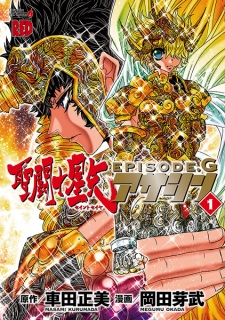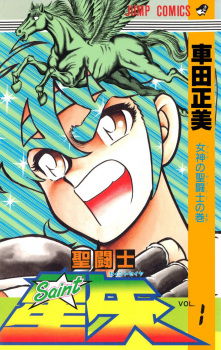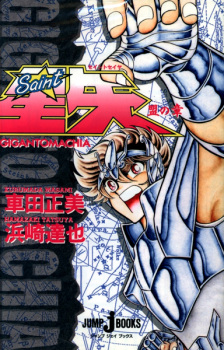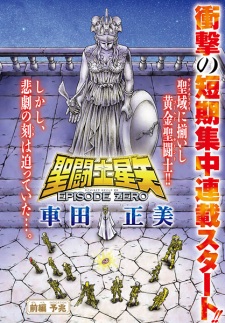May 4, 2019
EDITED REWIEW (the manga ended with chapter 118)
*contain SPOILERS*
I think many fans approach this series hoping for a continuation of Episode G, where there was a war with the titans, and where the author left some things unfinished and an open ending with Pontos.
Well, the first disappointment is this, it is not the continuation of EG, Assassin lends itself as a totally disconnected story. The setting is in modern times, about twenty years after the classic facts, we find Capricorn Shura and Leo Aiolia, who have traveled through time with a mission. History appears to be very chaotic, and evolves continuously, often changing intentions.
The other
...
problem, that I will mention it below in more detail, is the lack of development. Although, in these days the author's new series "Episode G Requiem" has begun, which I hope will reconnect to Assassin and complete it. If he does, I will edit this review again, otherwise GA will have been a useless manga.
STORY: 6 (potential 9-10)
As mentioned above, the story is confusing, chaotic, the author has introduced many mysteries, explained a few so far, and changed his mind several times.
In Ep GA the concepts of time travel and the multiverse are introduced. Shura and Aiolia arrive in the present future, XXI century (it is not specified when, but there are tablets, smartphones, skyscrapers ... so I think at least 20 years after the classic series, in 1990).
The initial idea is that of a tournament of swordsmen, called Gladiators, who appear to challenge Shura, the owner of Excalibur. Figures like Lancelot, Roland, and others make their debut.
However, this idea is then discarded and forgotten a bit. Towards chapter 50, the main enemy appears, namely Sagittarius Aiolos, but of another universe. Aiolos here is evil, and has become the Pope, at the head of another Sanctuary and other Gold Saints (including some already known), and aims to supplant the Sanctuary of the normal world, threatening the peace of the Earth. So, while continuing with individual battles, the story seems to turn towards a civil war, between two Sanctuaries of different worlds, each with 12 Gold Saints, a Pope and its Athena.
Not to mention, as every series of Saint Seiya that points on the Gold Saints, the FANSERVICE is very high, in this series more than others.
But all that glitters is not gold. The author puts many (interesting) things on the field, the premise of the civil war, intriguing flashbacks, the return of Seiya, 3 goddesses Atena, Olympic gods such as Hades, Poseidon and Zeus on the field, and much more. The premises are truly INTRIGUING, but ... the series ends at chapter 118 (with the deaths and disapperances of Shura and Aiolia), without explaining and developing anything. And this is the point, LACK OF DEVELOPMENT!
A lot of characters, from the classic to the unedited ones, are presented, but in the end, outside the protagonist (Shura), they have at most one short battle each, some not even this, since precisely the war and all the premises proposed by the author are not developed, due to the hurried closure of the series. I hope Episode G Requiem resume this scenario and develop it, otherwise, Assassin will have been a USELESS PRESENTATION.
ART: 9
The manga is full-color.
In the first part it is very uncertain. Okada still had to define the design and coloring well, so he did several tests, some good, some horrible (for example the gold cloth of Shun). Significant improvements are beginning to be made towards the 30 chapters, after which it gradually evolves to reach excellent levels. An example:
https://i.imgur.com/5AxTNTK.jpg
This is a real GOLDEN armor! The graphics and coloring settle on this level. And in general, the character of the characters has improved, compared to Ep G (where they were all very thin).
CHARACTERS: 10
As mentioned above, the fanservice is high.
We see all 12 classic Gold Saints, obviously in different versions from the original ones (as Okada had already done the same with Ep G). Some are more mature, older (some being back sooner than others), more experienced, with limitations, or simply, others are lined up against the normal world, and are enemies (paradoxically they are the ones who were more loyal to Saori).
Then there are the old classic protagonists, Saori, Seiya, Shiryu, Hyoga, Shun and Ikki, and also Kiki, now adults, and gold saints (as ND had predicted, but this does not mean that GA is canonical, is far from it).
Other classic characters also appear from time to time, with some single returns. Jabu, Ichi, Shaina, Marin, Tatsumi, June ... and also some old enemies, now allies, and some of ND.
And now the inedited characters. Well, I consider Darth Aiolos partially unedited, given that apart from the physical aspect, it has nothing to do with the normal Aiolos. He is a villain, destroyer and calculator, which Okada exalts beyond all limits.
The "gladiators" are more or less interesting. Lancelot, Paracelsus or Arthur, definitely. The rest, much less, including the goddesses Athena
Then there are minor irrelevant characters, such as faceless, or other avoidable ones, like "Hyoga's daughter".
ENJOYMENT: 7
Personally, the beginning is difficult to overcome, the first 20-30 chapters are not interesting, and terrible drawed. After that, the story becomes enjoyable.
Thanks to the chaotic world that Okada creates, many things are possible, many interesting ideas (the ruined past of the world of Aiolos), impossible scenarios (for example 3 generations of Aries), epic comparisons (a possible civil war between two Sanctuaries), and more. Always with lots of golden fanservice xD
So, as I say, you can enjoy a lot the gold fanservice here, and the high POTENTIAL that the story has, but, for the moment, it lacks of real devolpment, which is the thing that, at the end of the series, disappoints you tremendously.
Hope in Episode G Requiem.
Reviewer’s Rating: 6
What did you think of this review?
Nice
 0
0
Love it
 0
0
Funny
 0
0
Confusing
 0
0
Well-written
 0
0
Creative
 0
0Show all





.png)




















